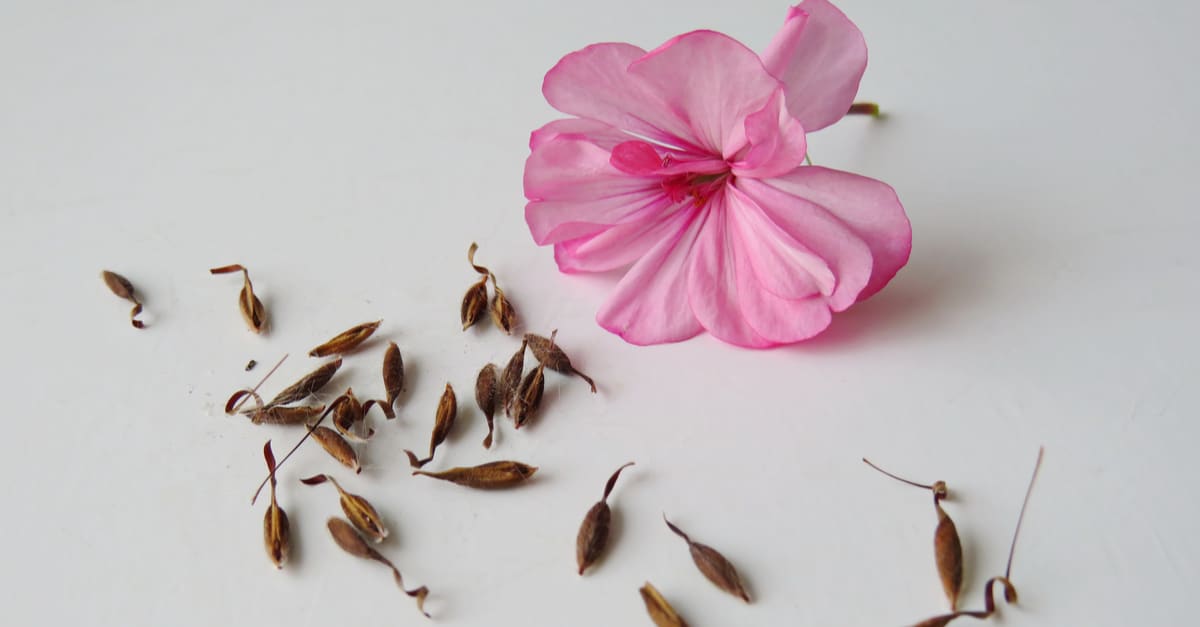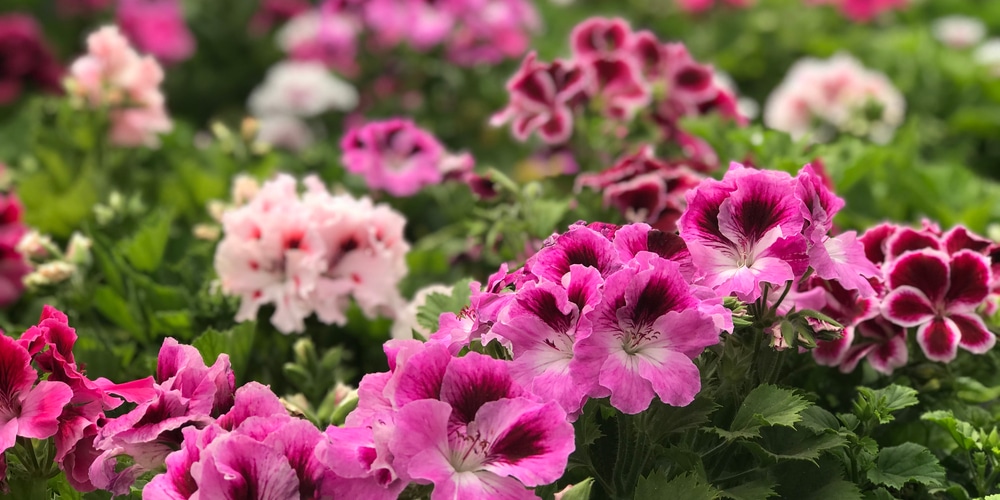There are over 420 species of geraniums that include perennials, shrubs, and succulents. One of the most popular is zonal geranium. This annual plant produces brightly colored flowers from spring until fall. As a versatile plant, it grows well in all hardiness zones especially when planted after the last frost. Want to know how to collect Geranium seeds?
How To Collect Geranium Seeds
To grow your favorite type of geranium, again and again, indoors or outdoors, you need to collect the seeds.
Step One – Act Before the Pods Burst Open
Geraniums are longtime favorites for homeowners who love gardening. They are colorful, easy to grow, and produce a lovely fragrance. The plants are usually grown as annuals in most zones. However, they’re evergreen perennials in zones 10 and 11.
American gardeners and growers fell in love with this fragrant garden plant over 200 years ago. Originating in South Africa, the geranium made its way to the US via France in 1786.
The first geranium cuttings were planted and multiplied as family and friends passed the cuttings between each other. Today, most areas in the US can grow geraniums. The classic geraniums are the zonal geraniums.
They bloom purple, pink, red, yellow, orange, burgundy, and white flowers. As easy growers, they’re drought and heat resistant. You may come across hybrids. If you do, know that the seeds are usually sterile. To collect geranium seeds, gather the pods before they burst.
Step Two – Inspect Your Geranium Plants
It’s important to inspect your geranium plants in summer before collecting the seed pods. We recommend that you inspect the seed heads to see if there are bulging pods. These 5 pods are usually at the base of the central flower spike.
If the pods are still green, you will need to wait until the seed cases, and the central spike begins to darken. However, if the pods are dark or have black central spikes, then they are ready for collection.
If you come across pods that are brown or dark brown, you’re too late. As you already know, geraniums have a spring-loaded seed distribution system. This means when the seeds are ripe, the plant pings them away. In fact, they’re pinged up to 3 meters away.
Inspecting the plants also allows you to identify the specimen. During the inspection, avoid clipping off the flowers.
Step 3 – Collecting the Seeds
Method One
Hold your pruning shears in your hand and select a geranium flower. The flower must be in full bloom. Take a small container with your other hand and place it underneath the flower’s seed pod.
Cut the stem just below the seedpod and the flower. Continue collecting additional blooms plus the seedpods at the base of the flowers in the small container.
Remember, while you will be using the same method, you need to disinfect the shears with isopropyl alcohol. Do this between cuts.
Take the blooms and lay them in a sunny dry area such as a windowsill. Use a paper bag as a base.
Give the blooms time to fade then snip the seedpod using your disinfected pruning shears. Now, leave the seedpods to dry. This should take a couple of weeks.
Once the seed pods turn brown, the seeds should be ready for collection. Roll the dry seed pods between your fingers. Do so over a sheet of white paper to collect the seeds. Leave the seeds to dry for another couple of weeks.
Then take a paper bag and store your geranium seeds. Place the bag in the bottom of a refrigerator until next spring when you want to plant them. Do so after the last frost passes.
Method Two
In method two, slip fine mesh bags over the seed pods. Do this after the flowers start wilting. Then cut off the bottom six inches of old stocking legs to use as alternative mesh bags.
The reason we recommend the use of nylon bags or stocking legs is because the material allows light to pass to the seedpods.
Using twist ties, hold the nylon bags in place. Now watch the seedpods split and release gray-brown geranium seeds. Start picking off the unopened seed pods and drop them in paper bags.
Then spread them on a tray to dry. We recommend a bright windowsill or a greenhouse. Leave the seed pods to dry until they open to release the seeds.
Method Three
In method three, wait for the seed pods to turn black, and before the plant pings the seeds away, carefully cup your hands around the ripe seed pods. Then, cut with scissors.
Avoid pulling as you risk triggering the plant’s seed distribution system, and you don’t want this to happen.
Once you collect the seedpods in your hands, place them in a paper bag and leave them for a week. The seedpods should open and ping the seeds in the paper bag. Now you can sow them fresh or wait until the last frost passes.
Growing Geranium Indoors or Outdoors
You can grow geraniums indoors or outdoors. This is because the conditions are similar. Indoors or outdoors, geraniums require plenty of sunlight, light fertilization, and watering.
If growing geraniums indoors, use pots and containers with drainage holes. This will keep the moisture regulated. However, if growing geraniums outdoors, you’ve to put more attention to moisture levels and drainage.
How To Collect Geranium Seeds: Conclusion
In spring, move your geraniums to a cool space in your house. This will help with blooming. When geraniums bloom, they produce full mounds of colorful flowers and that is why they are great for your garden or landscape.
Related Article: Will Frost Kill Geraniums?


